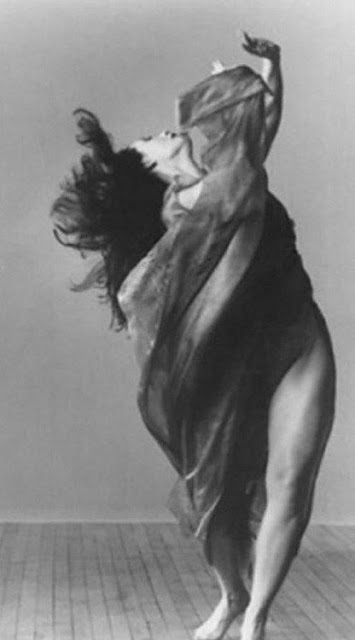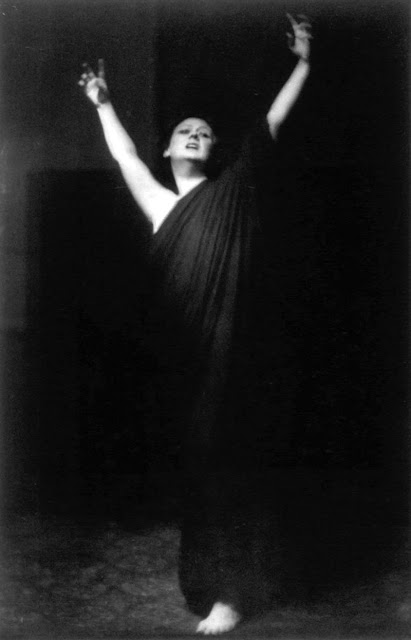Isadora Duncan
May 26 or 27, 1877 – September 14, 1927
You were wild once, don't let them tame you. ~ Isadora Duncan
~ Michele Colvin
“There are likewise three kinds of dancers: first, those who consider dancing as a sort of gymnastic drill, made up of impersonal and graceful arabesques; second, those who, by concentrating their minds, lead the body into the rhythm of a desired emotion, expressing a remembered feeling or experience. And finally, there are those who convert the body into a luminous fluidity, surrendering it to the inspiration of the soul.” ~ Isadora Duncan
Duncan’s philosophy of dance moved away from rigid ballet technique and towards what she perceived as natural movement. To restore dance to a high art form instead of entertainment, she sought the connection between emotions and movement: “I spent long days and nights in the studio seeking that dance which might be the divine expression of the human spirit through the medium of the body’s movement.” Duncan took inspiration from ancient Greece and combined it with an American love of freedom. This is exemplified in her revolutionary costume of a white Grecian tunic and bare feet. Inspired by Grecian forms, her tunics also allowed a freedom of movement corseted ballet costumes and pointe shoes did not. Costumes were not the only inspiration Duncan took from Greece. She was very inspired by ancient Greek art and utilized some of those forms in her movement.
Duncan wrote of American dancing: “let them come forth with great strides, leaps and bounds, with lifted forehead and far-spread arms, to dance.” Her focus on natural movement emphasized steps, such as skipping, outside of codified ballet technique. Duncan also cited the sea as an early inspiration for her movement. Also, she believed movement originated from the solar plexus, which she thought was the source of all movement. It is this philosophy and new dance technique that garnered Duncan the title of the creator of modern dance.
source: https://en.wikipedia.org/wiki/Isadora_Duncan
"Isadora Duncan at the Portal of the Partheon", Athens, Greece 1927
Isadora Duncan ~ Youtube Playlist:
https://www.youtube.com/playlist?list=PLOEGromsyJ_9sMqn48xn2l1PbX0LMx5JV
On the night of September 14, 1927 in Nice, France, Duncan was a
passenger in an Amilcar automobile owned by Benoît Falchetto, a
French-Italian mechanic. She wore a long, flowing, hand-painted silk
scarf, created by the Russian-born artist Roman Chatov, a gift from her
friend Mary Desti. Her silk scarf, draped around her neck, became
entangled around the open-spoked wheels and rear axle, hurling her from
the open car and breaking her neck. Desti said she called out to warn
Duncan about the shawl almost immediately after the car left. Desti
brought Duncan to the hospital, where she was declared dead.









Keine Kommentare:
Kommentar veröffentlichen
Hinweis: Nur ein Mitglied dieses Blogs kann Kommentare posten.